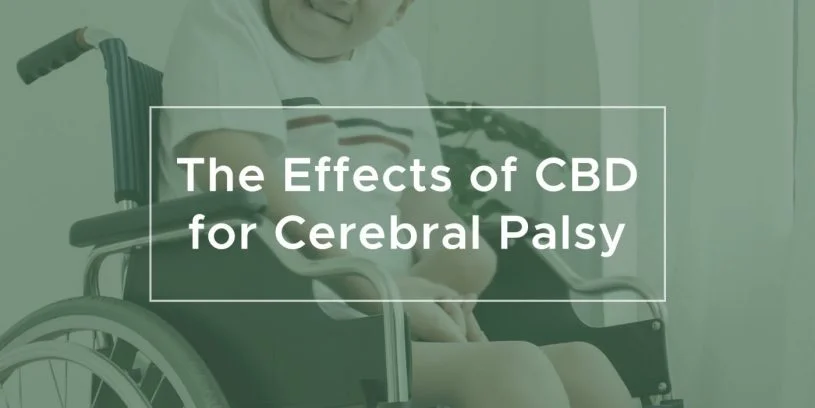The word “cerebral” refers to the brain, and paralysis – a muscle weakness. Cerebral palsy is muscle weakness due to brain damage. It is a group of neurological disorders that restrict movement. CP is the most common cause of disability in children, directly affecting a child’s development.
It usually occurs when the brain is not properly developed during the gestation time. Other causes of cerebral palsy may include:
- A major head injury
- Meningitis
- Any serious infection during pregnancy
- Shortage of oxygen during birth
- Reduced blood supply to the brain
It is one of the most common childhood coordination disabilities in children and apparently there is no cure for cerebral palsy till now.
CBD for Cerebral Palsy
Luba Blumkin performed one of the most relevant studies into CBD’s effects on Cerebral Palsy with the aid of a medical cannabis supplier Tikun Olam. The 2017 study, which was conducted by the Wolfson Medical Centre and analysed the effect of CBD on 36 children (aged 1-17) with cerebral palsy. 20 of the volunteers have finished the testing stage.
The study focused on kids with the highest level of motor disorders. After analysing the children for two months to ensure their conditions were stable, the team gave the kids CBD oil three times a day via a feeding tube or orally. Within four months, there was a noticeable improvement in their condition.
Blumkin asserts that the biggest positive change was in motor function.
Other benefits included less pain and an improvement in bowel movements and sleep.
A survey study by Adam Hirsh et al., published in the March 2012 edition of the American Journal of Physical Medicine & Rehabilitation, found that CBD oil provided the best relief for Cerebral Palsy patients when compared to several other medications. However, only 5% of the sample group had ever used the oil for pain.
Endocannabinoid System and Cerebral Palsy
Humans have an endocannabinoid system that is responsible for maintaining stability and balance in the body. Endocannabinoids produced by the body activates the CB1 and CB2 receptors to regulate essential physiological functions of the body(Lara-Celador et al., 2013; White, 2019). CB1 receptors are concentrated in our brain and nervous system which play a key role in controlling the voluntary and involuntary actions of the body. Cannabinoids acquired by exogenous sources such as industrial hemp or cannabis Sativa can also help in activating the CB1 receptors(Di Marzo, Bifulco, and De Petrocellis, 2004).
The two most prominent cannabinoids are CBD and THC. THC is an antagonist of CB1 receptors. CBD is a high potency antagonist of CB1 receptor agonists and an inverse agonist at the CB2 receptor. This CB2 receptor inverse agonist ability of CBD may contribute to its anti-inflammatory properties.
CBD and Anandamide
Research has shown that CBD oil is quite effective in treating the patients of multiple sclerosis(Corroon and Felice, 2019). It was found that these patients had a lower level of anandamide, one of the most prominent endocannabinoid that interacts with the the endocannabinoid system.
Scientist think that patients with cerebral palsy can also benefit from CBD as it can elevate the anandamide level. CBD can also increase the ability of our endocannabinoid system to retain anandamide. Research has shown that CBD can block the functionality of fatty acid amide hydrolase which works to break down anandamide(Chiurchiù et al., 2013).
How to use CBD for Cerebral Palsy
CBD for cerebral palsy can be used in a variety of ways such as oil, tinctures, and capsule serums, and topicals. If you are looking for a fast delivery option among the CBD products can go for vaporizers or inhalers which can relieve the symptoms quickly. However, the effect produced by CBD vaporizers is short-lived and fades off very soon. Ingesting oral CBD dose in the form of pills capsules or edibles may take a little longer to show its effect but are a perfect option for generalized pain and discomfort(Oleinik, no date).
We need more research to prove how CBD can exactly work in the body to reduce the symptoms of cerebral palsy or treat it completely. While CBD oil is safe, it can’t be used as the only treatment.
References
Chiurchiù, V. et al. (2013) ‘Distinct modulation of human myeloid and plasmacytoid dendritic cells by anandamide in multiple sclerosis’, Annals of neurology. Wiley Online Library, 73(5), pp. 626–636.
Corroon, J. and Felice, J. F. (2019) ‘The Endocannabinoid System and its Modulation by Cannabidiol (CBD).’, Alternative Therapies in Health & Medicine, 25.
Lara-Celador, I. et al. (2013) ‘Using the endocannabinoid system as a neuroprotective strategy in perinatal hypoxic-ischemic brain injury’, Neural regeneration research. Wolters Kluwer–Medknow Publications, 8(8), p. 731.
Di Marzo, V., Bifulco, M. and De Petrocellis, L. (2004) ‘The endocannabinoid system and its therapeutic exploitation’, Nature reviews Drug discovery. Nature Publishing Group, 3(9), pp. 771–784.
Oleinik, G. (no date) ‘The Different Types of CBD’.
White, C. M. (2019) ‘A review of human studies assessing cannabidiol’s (CBD) therapeutic actions and potential’, The Journal of Clinical Pharmacology. Wiley Online Library, 59(7), pp. 923–934.
Our Products
CBD Cannabis Oil in MCT 10 % 3000 mg 30 ml
114.95€ 114.95€Read moreA bottle of CBD Cannabis 10 % 3000 mg CBD 30 ml oil (with a small pipette). Made from certified, hand-picked and organically grown cannabis mixed with coconut oil (MCT) for better absorption of cannabinoids.
This phytocannabinoids extract is a full spectrum extract, professionally made and laboratory-tested to ensure the highest quality and safety.
Discount applies when purchasing more:
CBD Cannabis Oil in MCT 10 % 1000 mg 10 ml
Original price was: 46.59€.39.60€Current price is: 39.60€. 39.60€Add to cartA bottle of CBD Cannabis 10 % 1000 mg CBD 10 ml oil (with a small pipette). Made from certified, hand-picked and organically grown cannabis mixed with coconut oil (MCT) for better absorption of cannabinoids.
This phytocannabinoids extract is a full spectrum extract, professionally made and laboratory-tested to ensure the highest quality and safety.
Discount applies when purchasing more:
CBD Cannabis Oil in MCT 5% 1500 mg 30 ml
Original price was: 68.01€.57.80€Current price is: 57.80€. 57.80€Add to cartA bottle of CBD Cannabis oil (with a small pipette). Made from certified, hand-picked and organically grown cannabis mixed with coconut oil (MCT) for better absorption of cannabinoids.
This phytocannabinoids extract is a full spectrum extract, professionally made and laboratory-tested to ensure the highest quality and safety.
Discount applies when purchasing more:
CBD Capsules 750 mg
Original price was: 51.00€.43.35€Current price is: 43.35€. 43.35€Add to cartHigh-grade CBD / CBDA capsules professionally made and laboratory-tested to ensure the greatest quality and safety.
This product is suitable for those who want to avoid the specific taste of cannabis extracts. Nothing needs to be dosed, we’ve already done it for you.
Discount applies when purchasing more:
Hemp Oil for Pets 250 mg CBD 10 ml (2 bottles)
Original price was: 29.00€.24.65€Current price is: 24.65€. 24.65€Add to cartWe Are Canna full-spectrum CBD oil for pets is a completely natural, excellent source of vitamins and Omega fatty acids.
We all want our pets to be healthy and beautiful. Let’s take care of them by incorporating high-quality CBD products into their daily diet.
CBD soap 100g / 100mg CBD
Original price was: 9.99€.8.99€Current price is: 8.99€. 8.99€Read moreWe Are Canna CBD body soap is another unique, natural, handmade cannabis product made only from the highest quality ingredients, free from GMOs or other harmful substances.
Thanks to the knowledge passed down from generation to generation, the plant that humanity has used for thousands of years and modern technology, we are able to experience what is real, natural, tested and appreciated. CBD soap is made using a 100-year-old manufacturing methodology, which makes this product even more special.
The phytocannabinoids and terpenes in CBD soap, acting in synergy, will give your skin a variety of therapeutic properties, not to mention the pleasant aroma that will captivate everyone. From now on, bathing rituals will be different!







1 Comment